On the frontlines is our monthly newsletter section covering the activities of BirdLife Malta’s conservation, policy and nature reserve (Salina, Simar, Għadira and Foresta 2000) teams, together with an update about rare and scarce bird species observed.

End of the spring hunting season
From 10 April until the end of the month, BirdLife Malta deployed an average of four teams daily to monitor the countryside for any illegal activities. During this time, our teams recorded several different illegalities during morning and afternoon shifts. These included the illegal use of electronic callers, modified shotguns, and shooting at protected species.
While the hunting season was limited to Common Quail and European Turtle-dove, with numbers set at 2,400 Quail and 1,500 Turtle-doves respectively, our teams confirmed 14 instances of protected birds being shot. Notably, Turtle-doves, which are listed as ‘Vulnerable to Extinction’ on the IUCN Red List, were shot at even before their season opened on 17 April. Among the illegally shot protected birds, we recorded two Common Cuckoos, three Common Kestrels, four Marsh-harriers, two Bee-eaters, a Night-heron, a Hobby, a Squacco Heron, and a House Martin.
Additionally, our teams observed several injured protected birds in flight, suggesting previous gunshot wounds. The spring hunting season was only permitted up until 12pm each day, however, we detected multiple cases of illegal hunting activities after this time in both Malta and Gozo.
BirdLife Malta extends heartfelt thanks to all the resident and international volunteers who dedicated their time to support our field efforts and to help expose the failings of this derogation during our Spring Watch 2024 camp.
Rehabilitation and releases
During the month of April, we faced increased activity at our rehabilitation centre due to the spring hunting season and peak spring migration. We receive and respond daily to calls from the public for injured birds and reports of illegal activities. This shows how with our work we are a reference point for bird conservation. Although in many cases we decided to postpone releases because of the hunting season, this month we were able to bring back to the wild a Little Bittern, a Nightjar, a Scops-owl and a Yellow-legged Gull.
We also released two Short-toed Larks that had been confiscated by the police. The birds had been used as illegal live decoys and kept in really miserable conditions. They are now back in the wild after a period of rehabilitation to heal the wounds caused by those conditions.
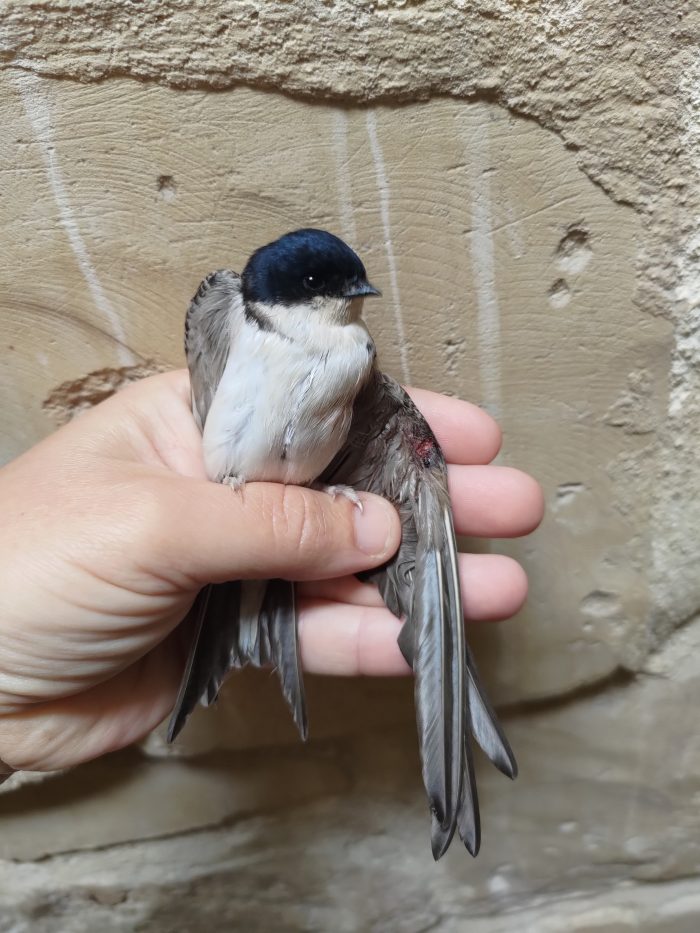
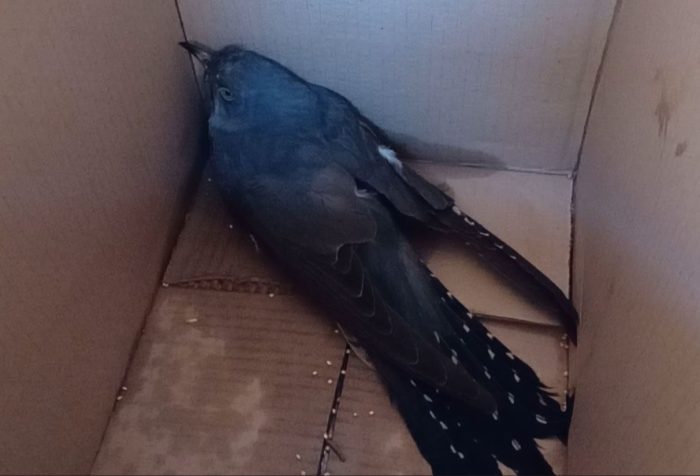


Salina Nature Reserve
Sightings
April was a spectacular month for birdwatching at the Salina Nature Reserve, highlighted by the migration of numerous bird species. The standout sighting was an adult Greater Flamingo, originally ringed as a chick in Spain in 1998. This bird, which has nested in both Spain and Algeria, made its most easterly journey to Malta. It stayed at Salina for several weeks, drawing crowds of admirers.
Among the rare sightings, the Little Tern was particularly noteworthy, as it is seldom seen in the area. The reserve also hosted a variety of wader species, including Little and Common Ringed Plovers, Wood, Green, and Common Sandpipers, as well as Little and Temminck’s Stints. Larger species such as Ruffs and Black-winged Stilts were also observed.
The wetland areas of the reserve were alive with passerine activity, featuring an array of flycatchers, warblers, redstarts, whinchats, and wheatears. Additionally herons, egrets, and even Glossy Ibises made significant appearances, further enriching the reserve’s biodiversity.
Works
Construction has begun on a new wooden fence at Salina Nature Reserve, with plans to resume work as soon as additional wooden poles are purchased. This new fence will replace the existing structure, which has suffered significant damage over time.
Meanwhile, the Salina office has undergone a transformation. Thanks to the donation of used furniture, the office now boasts a more open and modern look, enhancing the work environment for staff and visitors alike.
In addition to these upgrades, new display boards have been designed and produced for the Salt Museum. These additions complement the final arrangement of the existing displays, ensuring a cohesive and informative visitor experience.
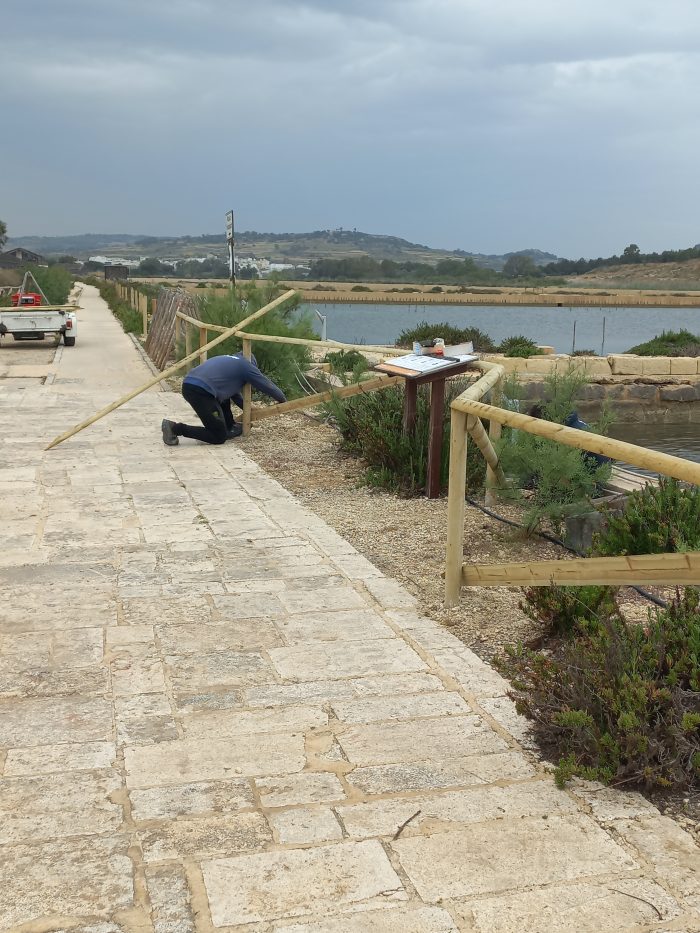
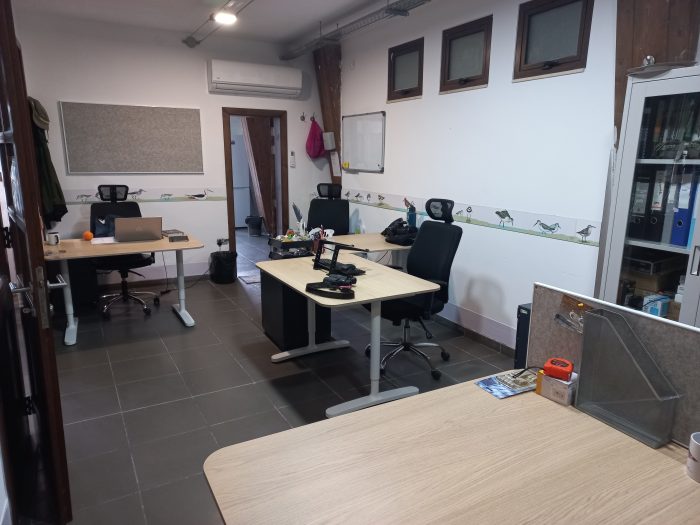

Għadira Nature Reserve
Sightings
Following a slow start in spring migration in March, April witnessed a significant influx of migratory birds to Għadira Nature Reserve. The month began with two Spoonbills stopping for a day. Flocks of Ruffs and Wood Sandpipers were attracted by the abundance of insects on the islands. Large numbers of Wood Warblers and Tree Pipits were observed feeding among Tamarix foliage. Additionally, a variety of wader species, including Common, Green, Wood and Curlew Sandpipers, Little Stints, Greenshanks and even Common Redshanks, were seen resting and feeding at the water’s edge, especially during adverse weather conditions.
Small flocks of Purple Herons were also spotted roosting on several occasions, and noisy flocks of Bee-eaters were seen feeding on flying insects over the reserve for most of the month. Most spectacular of all were a number of Ospreys which were seen in singles on various dates, stopping to rest on poles, bathing, and hunting mullets. Other rarities included a Common Woodpigeon and a couple of Glossy Ibises on different days.
The first pair of Little Ringed Plovers began nesting on the west pebble island and hatched four chicks by the end of the month. Another pair were observed in courtship on the east pebble island and started incubating by the third week. A further pair was noted in courtship on the stony island at the end of the month. However, no Black-winged Stilt pairs have yet established territories at Għadira Nature Reserve. For the past two years, their nesting was disrupted by night-time roadworks on Marfa Road. We remain hopeful that a pair or two will arrive in May to nest.
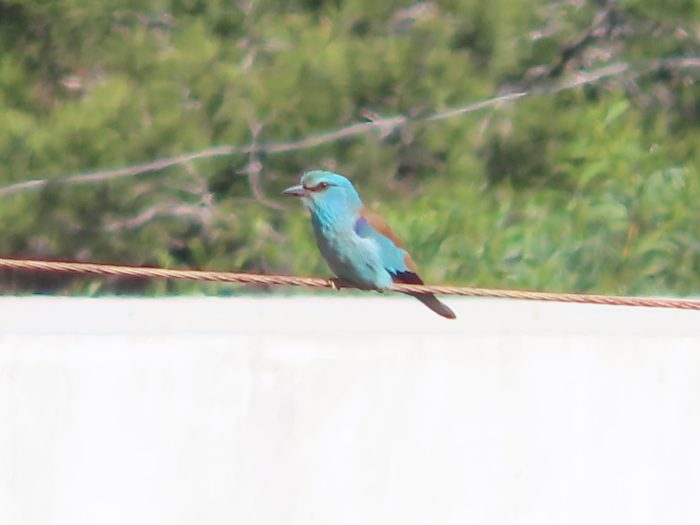
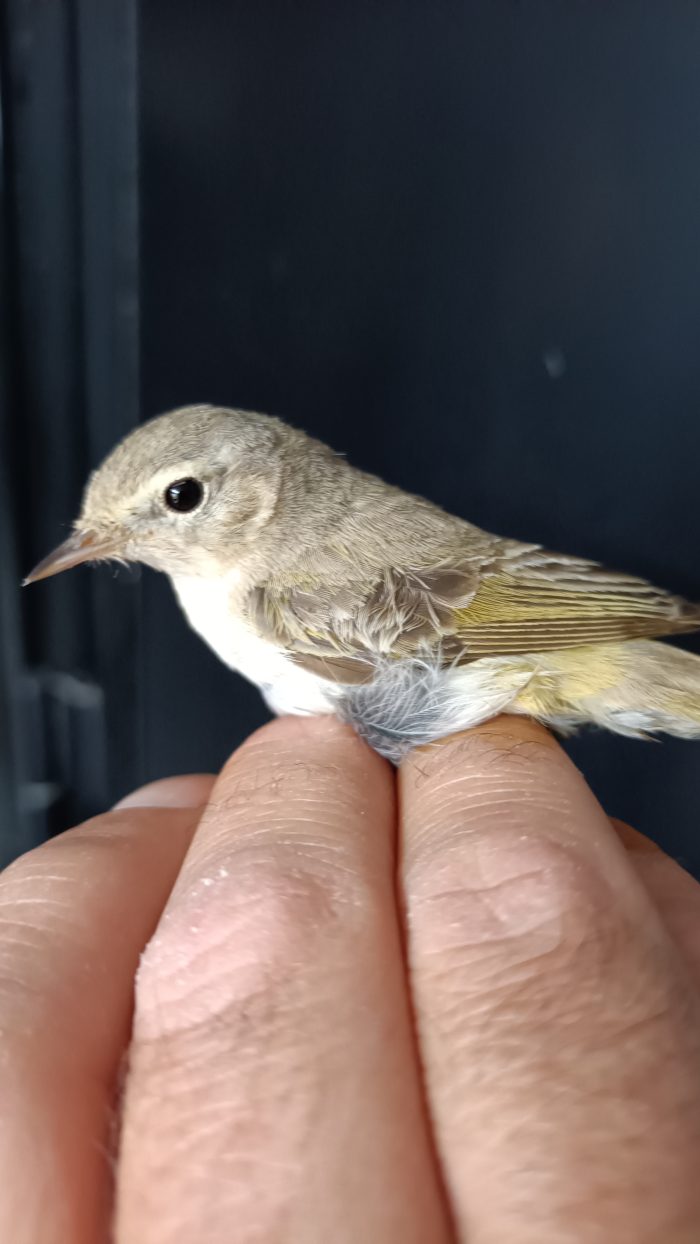
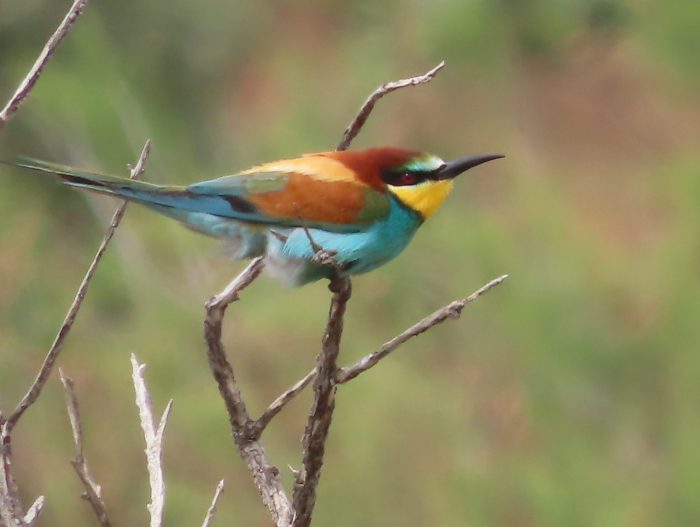
Works
Bird records were taken daily with a particular focus on bird ringing as heavy migration proceeded, with daily records often exceeding 80 birds ringed. A total of 21 ringing sessions were carried out in April (excluding weekend volunteer sessions) with the month’s total exceeding 950 birds ringed. Most species ringed were Wood Warblers, Barn Swallows, Tree Pipits, Garden Warblers, Collared Flycatchers, Pied Flycatchers, Whitethroats and a small number of rare Eastern Bonelli’s Warblers and even Semi-collared Flycatchers.
Strong southeast winds caused damage to the large Tamarix trees on the east side of the reserve. One of the trunks closest to the visitor centre had to be removed for safety reasons, while other trees blocking the path following the winds were pruned.
Simar Nature Reserve
Sightings
During this month, Simar Nature Reserve hosts several species of migratory birds that are en route to their breeding grounds throughout the Western Palearctic. Many of these species, travelling over the Mediterranean Sea, often stop to refuel in the Maltese Islands, including our nature reserves.
The unique habitat at Simar provides an excellent source of food and shelter for a diverse array of birds. We have observed large numbers of birds, including Wood Warblers and Pied Flycatchers. We also recorded unusually high numbers of Collared Flycatchers, as well as significant populations of Willow Warblers, Sedge Warblers, Common Whitethroats, and Garden Warblers. Although less frequent, Common Redstarts, Common Nightingales, Spotted Flycatchers, and Whinchats are present. Occasionally, Golden Orioles were spotted as well as a few Turtle-doves and Woodchat Shrikes. A few Purple Herons were also present often feeding amongst the reeds.
Other notable species included a flock of seven Squacco Herons, a Glossy Ibis, several flocks of Cattle Egrets, a few Semi-collared Flycatchers, a Ferruginous Duck, and a Dunlin. Marsh-harriers regularly visited the reserve to hunt but also to roost. An Osprey also visited the reserve to feed and rest.
Breeding was carried out by the resident species including Sardinian Warblers, Cetti’s Warblers and Moorhens. After an absence of several years, the Common Coot has returned to nest in the reserve with the presence of two pairs. This has coincided with the resurgence of the Common Reed, which has flourished this year, forming dense reedbeds.
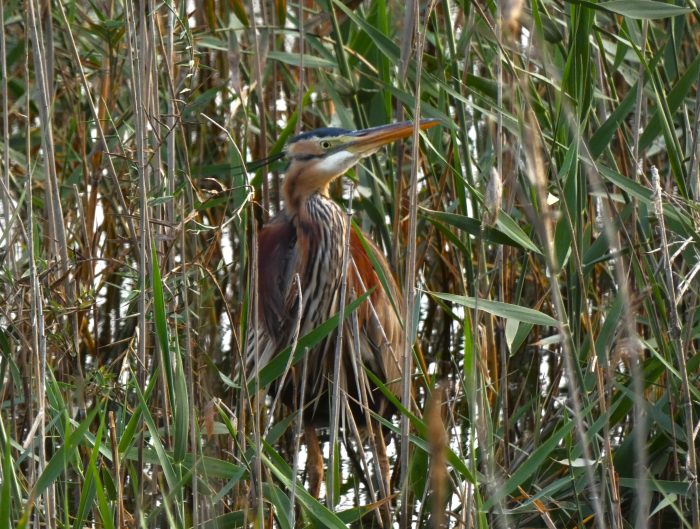
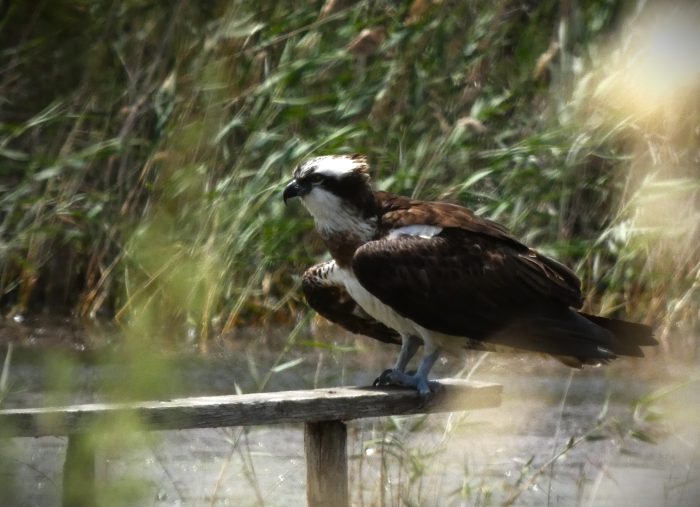

Foresta 2000
Sightings
In April, visitors to Foresta 2000 were treated to sightings of various birds of prey, including Marsh-harriers and Common Kestrels. These species typically begin their migration at the end of March and are among the most commonly observed birds of prey. Interestingly, the number of Western Marsh-harrier sightings increased as we moved towards the end of April.
In addition to raptors, visitors had the opportunity to observe species of passerines such as the Common Whitethroat, Common Redstart, and Whinchat. These birds were often seen feasting on insects found in the open spaces among small shrubs.
The Aleppo Pine thicket was bustling with activity, with plenty of Wood Warblers, Willow Warblers, Pied Flycatchers, and Collared Flycatchers spotted throughout the month.
The skies were also alive with the swift movements of Swifts, Swallows, and House Martins. Additionally, at the beginning of the month, Common Hoopoe specimens were spotted in the open spaces on top of the reserve. A few flocks of European Bee-eaters were noticed above the reserve towards the end of April.
Birdwatchers were delighted by the sighting of a Purple Heron during a cloudy day in the middle of April, and the distinctive call of a Night-heron was heard in Foresta 2000 after sunset.
The beginning of April also brought a burst of colour to Foresta 2000 with the blooming of the Southern Star of Bethlehem, known locally as Ħalib it-Tajr Żgħir. Additionally, the delicate leaves and purple flowers of Love-in-a-Mist (Sieq il-Brimba) added to the beauty of the landscape. These flowers attracted a lot of butterflies including Maltese Swallowtail.
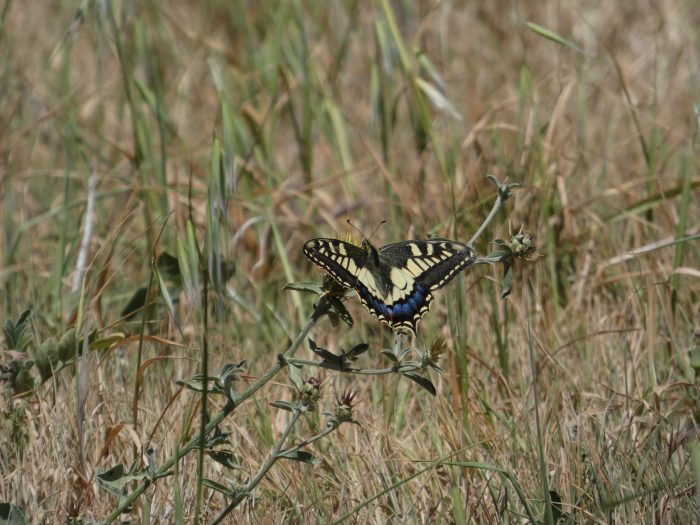
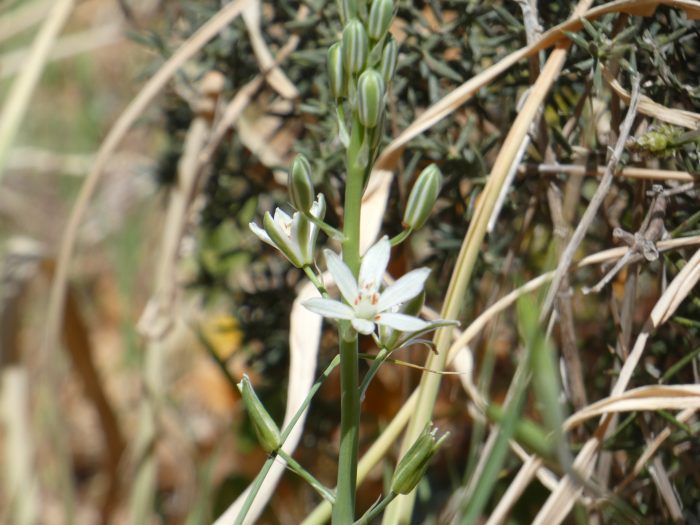

Works
Throughout the month, efforts were made to clear paths from fallen and overgrown branches. Weekly clean-ups were taking place during the month. On 26 April, during the Earth Day clean-up organised by iGEN together with BirdLife Malta and Nature Trust-FEE Malta, the beach and the outskirts of Foresta 2000 and Għadira Nature Reserve were decluttered. The volunteers removed 700kgs of rubbish from Għadira Bay area.
If you want to help in our work or organise a team-building event in Foresta 2000, feel free to contact us.
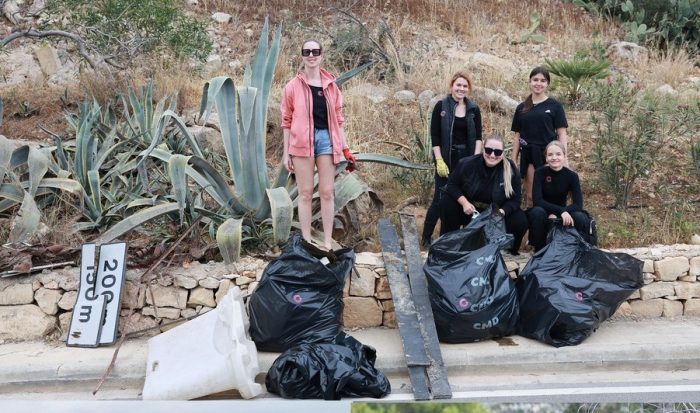
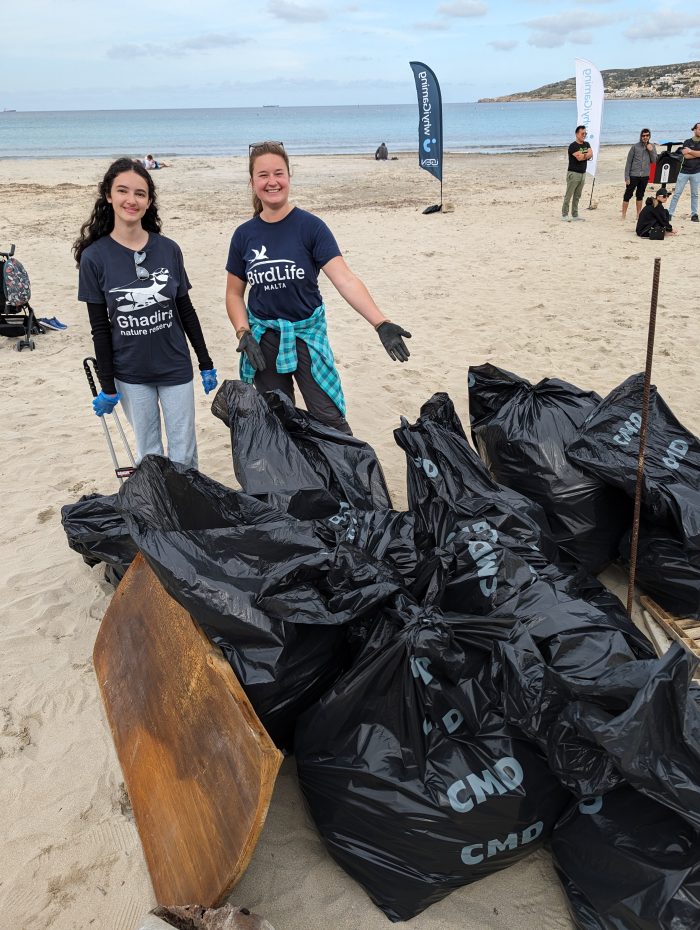

Towards a national policy on offshore renewable energy
BirdLife Malta has critically evaluated the Stategic Environmental Assessment (SEA) for Malta’s Offshore Renewable Energy Development Policy and stressed the urgent need for amendments. A total of six areas are being proposed for offshore renewable energy. The report’s reliance on incomplete data raised concerns about its effectiveness and compliance. Notably, we highlighted the incomplete seabird assessments and the need to request stringent mitigation measures from the successful bidders, including bird deterrents and surveillance systems on wind turbine structures. We have also urged better assessments and mitigation measures for marine and coastal biodiversity preservation and suggested that the modelled data presented in the SEA should be validated through boat-based surveys, remotely operated videos and/or scuba diving. Read our recommendations here.


New environmental permitting regulations
As BirdLife Malta, we welcomed the formulation of the Environmental Permitting Regulations, recognizing their pivotal role in protecting the environment and human health. Our recommendations included stricter criteria to evaluate permit applications, transparent procedures, and robust measures to protect sensitive areas and species. For example, a permit is only required for activities involving 50 persons or more in a protected area, however we stressed that some activities within protected areas can have a negative impact even if they involve less than 50 persons. In the interest of transparency, we also recommended that all permit applications are publicly available on the website for consultations. With these enhancements, we believe the Environmental Permitting Regulations can play a more effective role in preserving Malta’s natural heritage for future generations. Read our comments here.
Air pollution control programme: BirdLife Malta submits recommendations
In response to Malta’s National Air Pollution Control Programme update, BirdLife Malta submitted recommendations for public consultation. We stressed the need for a robust air quality monitoring network to monitor for daily and seasonal changes, both from land-based and offshore-based pollution sources. Specific targets have been urged for transitioning to clean technology and transportation, with a focus on innovative solutions surpassing EU requirements. We also advocated for a change in the design of urban infrastructure to include safe walking and cycling lanes and limitations on the number and scale of industrial activities contributing to air pollutant emissions. Read our recommendations here.
Objection to Xlendi development
BirdLife Malta opposed a proposed 13-storey residential development in Xlendi (Gozo) due to environmental concerns. The project, divided into two phases, threatens Natura 2000 sites, intensifies light and noise pollution, violates local building height regulations, and contradicts coastal management plans. We highlighted the adverse impact on protected Scopoli’s Shearwaters and challenged the project’s compatibility with Malta’s environmental and development objectives. Hence, we formally objected to PA/01633/24, emphasizing the need to safeguard the area’s natural and scenic qualities while promoting sustainable coastal zone management. Read our objection here.
Landscaping in urban areas
BirdLife Malta welcomed the development of General Guidelines for Landscaping in Urban Areas and presented key recommendations for consideration. We proposed a more ambitious objective to provide actionable guidance for stakeholders to include green infrastructure along with recommendations on the use of materials, street furniture and the inclusion of climatic comfort. We suggested that an emphasis should be placed on incorporating nature-based solutions (NBS), which offer benefits including cooling effects, biodiversity support, and improved air quality. Native plants, trees and shrubs should be exclusively recommended to prevent invasive threats and enhance ecosystem resilience. Additionally, the establishment and preservation of urban ecological corridors are essential for species connectivity amidst urbanization. Finally, we suggested that maintenance practices should prioritize biodiversity conservation, such as avoiding works during bird nesting seasons and fostering native flora growth. Read our recommendations here.

Three crake species at one go!
European crakes are charming and elusive birds that are usually associated with marshland and watercourses. With their secretive nature and cryptic plumage, they often go unnoticed to inattentive eyes. These small, rather chubby birds have intricate patterns of brown, black and white feathers, helping them to blend seamlessly into their surroundings. Their seemingly over-sized toes are perfectly adapted for navigating through dense vegetation, where they forage for insects, small crustaceans, and seeds.
During spring one might be lucky to spot crakes even in our islands, with the Spotted Crake (Gallozz tak-Tikek) usually being the commonest species. The Little Crake (Gallozz Żgħir) is also a regular visitor, but tends to be rather scarce. Although the Baillon’s Crake (Gallozz tal-Faxxi) rarely pays us a visit, spotting one is not impossible either. At the start of April, local birdwatchers were lucky to spot all three crake species during the same week, and all in the same spot!
Crakes face various threats, including habitat loss due to drainage and development, predation by introduced species, pollution, as well as direct and indirect disturbance from humans. Conservation efforts focused on preserving and restoring wetland habitats are essential for ensuring the survival of these charming and elusive birds for future generations to appreciate and enjoy.


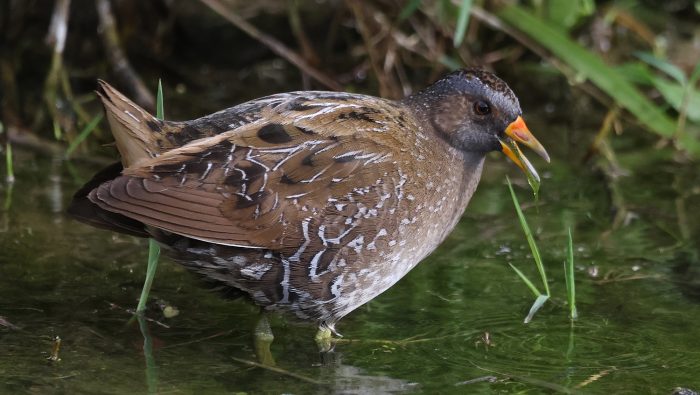
26-year-old Greater Flamingo visits Salina!
Some days before Easter 2024, on Thursday 28 March, a Spanish-ringed Greater Flamingo landed at our Salina Nature Reserve. From the white colour-ring bearing the details 0|IBD, we managed to trace the origin of the bird to Spain, and even discovered that the adult flamingo was ringed in 1998, making it nearly 26 years old!
Our Spanish colleagues confirmed that the Greater Flamingo was ringed on 15 August 1998 in Malaga, Spain, as a chick. At such a tender age, researchers tagged its legs with unique numbers for identification when sighted elsewhere. From 1998 to 2006, the bird strutted across Spain, then surprised everyone nesting in Algeria in June 2006. After a hiatus, it made a comeback in Spain in 2021 and then Algeria again in 2023. And this spring it graced us with its presence in Malta!
This bird underscores the importance of research and how these majestic creatures belong to everyone worldwide. The bird spent quite some time resting at the saltpans at Salina before taking off to continue with its spring migration, more than three weeks later! You can watch a video of the Greater Flamingo in the saltpans here.
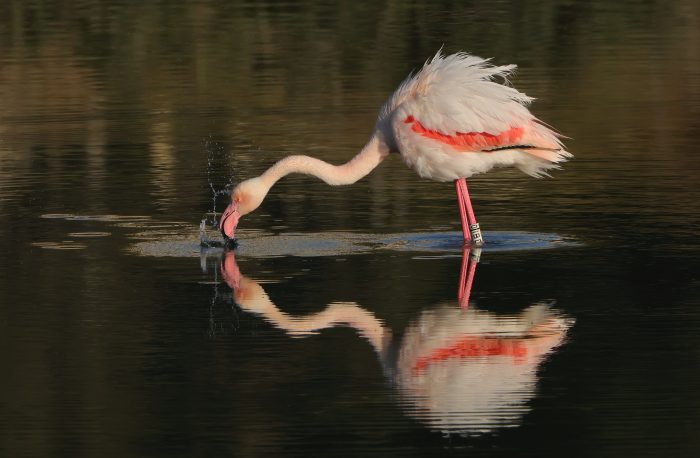

Credits
Words: Charles Coleiro, David Attard, Justine Borg, Manuel Mallia, Marcella Giornetti, Aron Tanti, Nathaniel Attard, Vera Tokmakova
Photographs: Aron Tanti, Charles Coleiro, David Attard, iGEN, Manuel Mallia, Mario V Gauci, Nicholas Barbara, Vera Tokmakova

